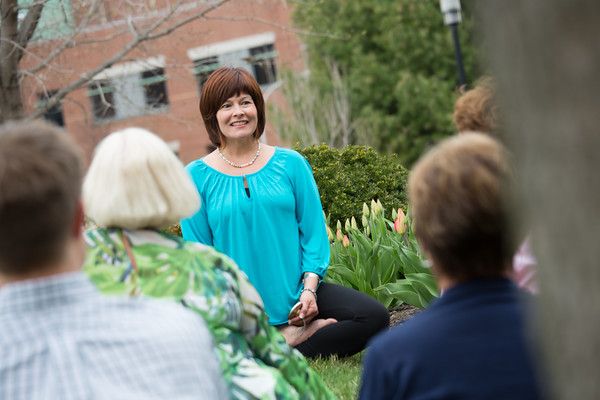Practicing yoga has the power to enhance physical, mental and emotional well-being.
Most of us experience stress in our hectic, day-to-day lives. However, a person in cancer treatment might struggle with intensified feelings of anxiety, depression or fear.
Stress is a blanket term that describes tension in various facets of life. It shows up both physically and emotionally for cancer patients; fatigue, soreness, anxiety and depression are just some of the stressors induced by treatment. What can a patient do to help alleviate these unpleasant side effects? For some, the answer is yoga.
This ancient practice is much more than a form of physical exercise and offers a multitude of benefits. Practicing yoga has the power to enhance patients’ physical, mental, and emotional well-being. Yoga is said to bridge the mind and the body through moving meditations. People report feelings of relaxation, calmness, and increased tolerance from a consistent yoga practice. According to a Harvard Medical School Mental Health Letter, yoga reduces stress and anxiety, which in turn reduces heart rate, lowers blood pressure and eases respiration.
Never miss another Cancer Talk blog!
Sign up to receive our monthly Cancer Talk e-newsletter.
Sign up!Mental: Anxiety, a mind full of endless thoughts, makes people restless, especially during the night, and promotes sleep difficulties. How do we soothe anxiety? One research study reported cancer survivors who attended bi-weekly yoga sessions experienced improved sleep, reduced fatigue, and even better quality of life. The program included breathing exercises, gentle Hatha and restorative yoga postures, and mindfulness exercises. Yoga activates a relaxation response and can help relieve feelings of anxiety.
Emotional: On an emotional level, yoga helps people with cancer reconnect with their body after chemo, radiation and/or surgery. Through yoga, people achieve a sense of improved well-being from focusing on moving from one pose to the next, and thereby connecting to the present moment. The breathing and movements ease stress and promote inner peace, which can translate to increased emotional coping skills during and after treatment.
Physical: Yoga aims to bring attention to the present moment by focusing on the breath. There are many different styles of yogic breathing; typically, people focus on inhaling through the nose and exhaling through the nose. This type of breathing shifts the balance from the sympathetic nervous system (also known as fight-or-flight response) to the parasympathetic nervous system, which promotes relaxation by slowing the heart rate.
Chronic stress, such as the type brought on by cancer treatment, turns on the fight-or-flight response without any rest. The breath work, in conjunction with gentle yoga poses, is calming and restorative. It lowers breathing and heart rate, decreases blood pressure, and increases blood flow to the intestines and reproductive organs. Furthermore, studies have shown that a structured yoga practice during cancer treatment can greatly improve symptoms such as pain and fatigue.
A Sense of Community
Going through a cancer diagnosis and treatment can be an isolating experience. Family and friends may not know how to act or what to say. For the patient, this can lead to heightened anxiety or even depression. Yoga classes specifically created for cancer patients offer more than a traditional support group. Yoga creates a sense of belonging, reduces feelings of stress and improves quality of life.
Remember:
Consult with your physician before starting any new yoga regimen to inquire about any necessary precautions or limitations. A copy of this video is available in the Resource Center for Patients and Families.
